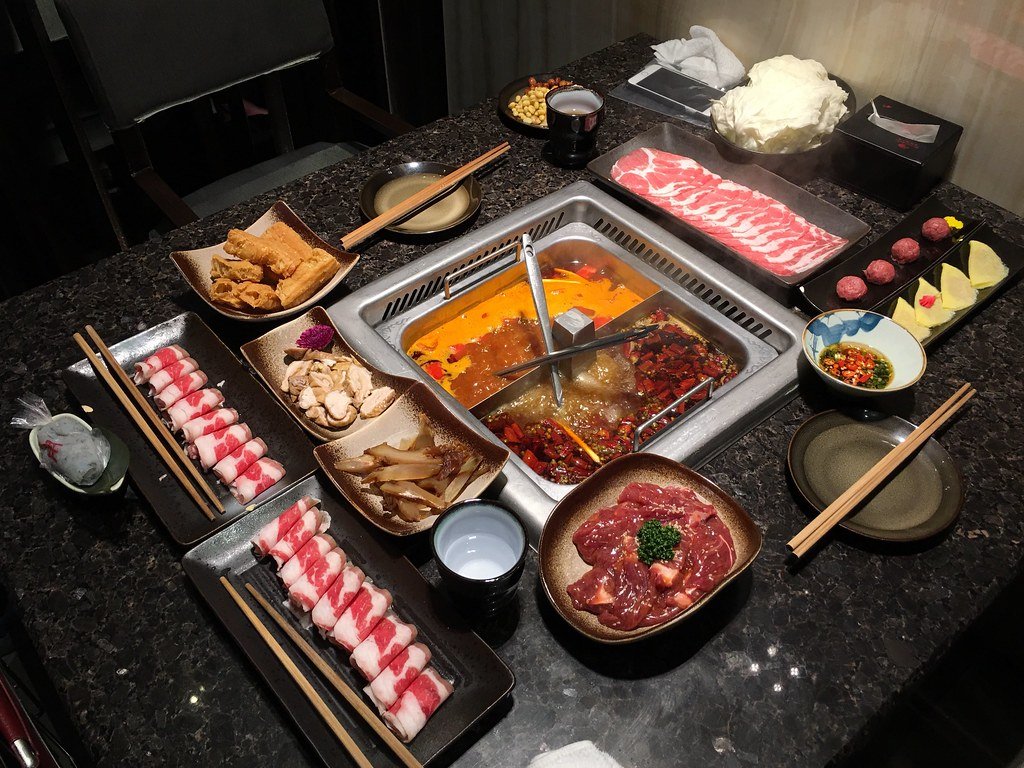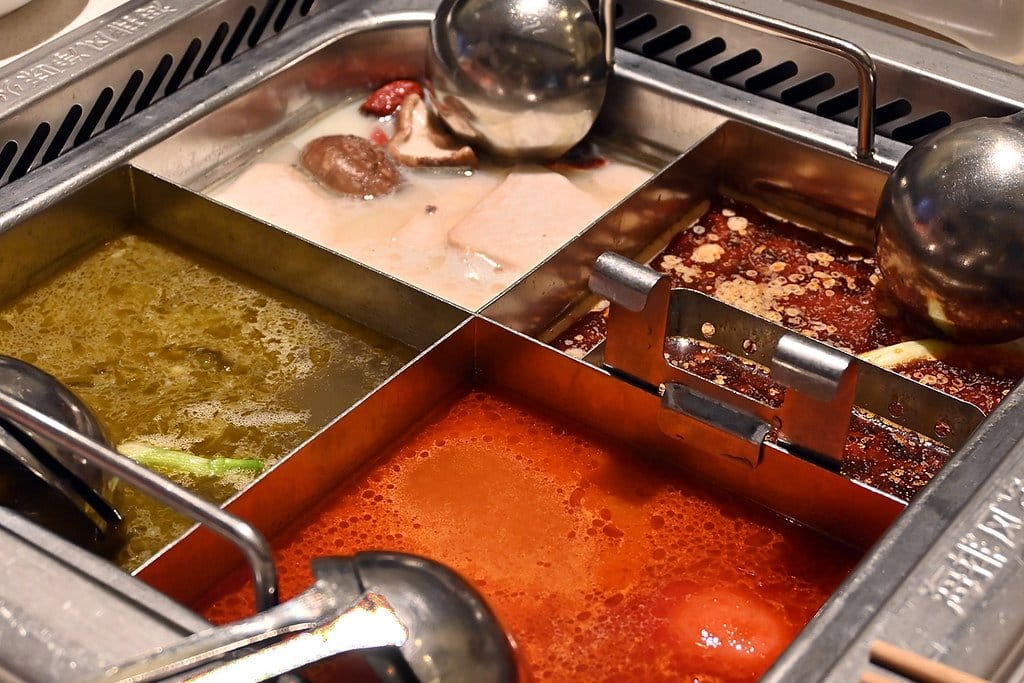Hotpot Food: A Culinary Journey into the Heart of Chinese Food Culture

Hotpot is one of China’s most iconic dishes, representing more than just a meal—it’s an experience that brings people together. Whether you’re a traveler looking to indulge in authentic Chinese flavors or simply curious about Chinese cuisine, hotpot is a must-try.
In this blog, we’ll explore the ins and outs of China’s hotpot culture, its variations, and essential tips to enjoy the best hotpot experience.
Table of Contents
What is Hotpot?
Hotpot (火锅, huǒguō) is a communal dining experience where diners cook raw ingredients in a simmering pot of broth. It’s a social event as much as it is a meal, often enjoyed with friends and family. The beauty of hotpot lies in its customizability—each person can cook and season their food just the way they like.
Types of Hotpot in China
China is home to many regional hotpot styles, each with unique flavors and ingredients. Here are some popular varieties you must try:
1. Sichuan Hotpot
Known for its intense spiciness and numbing sensation, Sichuan hotpot is perfect for spice lovers. The broth, flavored with Sichuan peppercorns and chili, delivers a punch of heat. Typical ingredients include thinly sliced beef, tofu, lotus root, and vegetables.

2. Beijing (Shuan Yangrou) Hotpot
In northern China, lamb is the star of the show. Beijing hotpot features thin slices of lamb cooked in a light, mild broth made with bone stock. It’s usually accompanied by dipping sauces like sesame paste, giving the meal a rich, nutty flavor.

3. Cantonese Hotpot
Cantonese hotpot focuses on fresh seafood like fish, shrimp, and crab. The broth is typically mild, allowing the natural sweetness of the seafood to shine through. You can also find ingredients like beef, pork, and vegetables.

Hotpot vs. Other Asian Hotpots
If you’re familiar with hotpot from other Asian countries, you may notice some differences in Chinese hotpot:
- Vietnamese Hotpot: Known for its light and sour flavors, often made with tamarind or lemongrass.
- Thai Hotpot: Features bold, spicy, and sour flavors, with ingredients like lime leaves, chilies, and coconut milk.
- Korean Hotpot: Often features kimchi, beef, and mushrooms, with a spicy, savory broth.
How to Enjoy Hotpot Like a Local
For a first-time traveler to China, eating hotpot can feel overwhelming. Here are some tips to help you enjoy the experience like a local:
1. Choose Your Ingredients
Whether you’re eating in a restaurant or buying ingredients for a home-cooked hotpot, variety is key. Popular options include:
- Meat: Beef, lamb, pork, or chicken
- Seafood: Shrimp, fish, squid
- Vegetables: Spinach, cabbage, mushrooms
- Tofu: Fresh, frozen, or fried
- Noodles: Rice noodles, sweet potato noodles
2. Make Your Dipping Sauce
The dipping sauce is where you can really get creative. Most restaurants offer a DIY sauce station with ingredients like:
- Sesame paste
- Soy sauce
- Garlic
- Chili oil
- Fresh herbs
Customize your sauce to suit your taste—whether you like it spicy, tangy, or mild.

3. Watch the Cooking Times
Different ingredients require different cooking times. Meat slices should be cooked briefly (about 10-15 seconds), while harder vegetables like root vegetables may need a few minutes.
4. Mind the Etiquette
While hotpot is a casual and fun meal, there are a few etiquette rules to follow:
- Use serving chopsticks to pick up raw ingredients.
- Don’t overload the pot with too many ingredients at once.
- Share the broth and ingredients evenly with others at the table.
Hotpot Etiquette: A Few Essential Rules
Hotpot dining in China has some unspoken etiquette:
- Always use serving chopsticks or tongs to handle raw food.
- Avoid double-dipping in communal dipping sauces.
- Be mindful of cooking times and space—don’t hog the pot!
Where to Try Hotpot in China
If you’re visiting China, you won’t have to look far for an authentic hotpot experience. Major cities like Beijing, Chengdu, and Guangzhou are home to countless hotpot restaurants. Here are a few famous places:
- Haidilao (海底捞): This chain is renowned for its exceptional service and fresh ingredients.
- Lao Beijing Hotpot: A go-to spot for Beijing-style lamb hotpot.
- Shancheng Hotpot: A famous Sichuan-style chain known for its spicy broth.

Hotpot for Vegetarians and Vegans
Hotpot can easily be adapted for vegetarian and vegan diets. Most restaurants offer a wide range of vegetables, tofu, and noodles. Ask for a vegetable-based broth, and you can enjoy a flavorful, plant-based meal.
How to Recreate a Chinese Hotpot at Home
Can’t make it to China but still want to enjoy hotpot? Many Asian grocery stores sell hotpot kits, which include broth bases and sauces. Here’s what you’ll need to get started:
- A portable burner or hotpot cooker
- Broth base (spicy, mushroom, or tomato)
- Assorted vegetables, meats, and tofu
- Dipping sauces and condiments
Invite friends over and recreate the communal hotpot experience at home!
Final Hotpot Tips for Travelers
If you’re planning to enjoy hotpot in China, here are a few final tips:
- Be adventurous: Don’t shy away from unfamiliar ingredients like beef tripe or pig’s blood. Hotpot is all about trying new things!
- Eat slowly: Hotpot is meant to be enjoyed at a relaxed pace. Take your time, chat with friends, and savor the flavors.
- Stay hydrated: Spicy broths can be intense. Drink plenty of water to stay hydrated during your meal.
Conclusion: Why Hotpot is a Must-Try in China
Hotpot isn’t just a meal—it’s an essential part of Chinese culinary culture. Whether you prefer spicy Sichuan flavors or the fresh, mild taste of Cantonese seafood, there’s a hotpot style for everyone. The next time you’re in China, make sure to gather friends and enjoy a hotpot feast. It’s an unforgettable experience!








